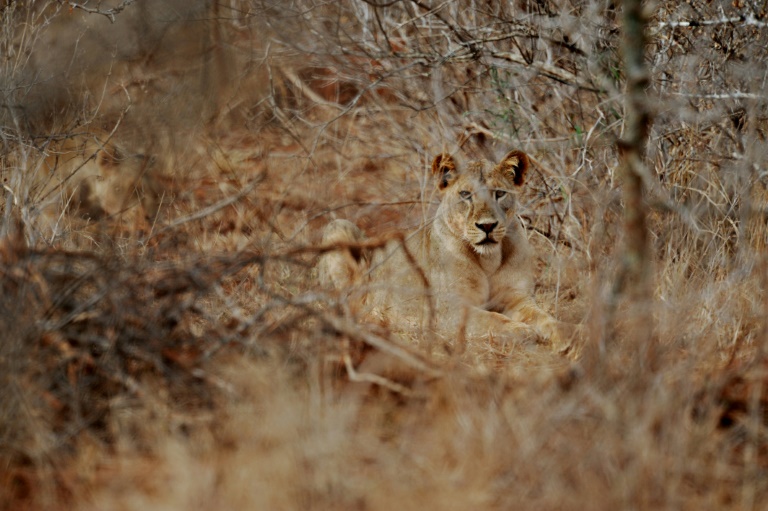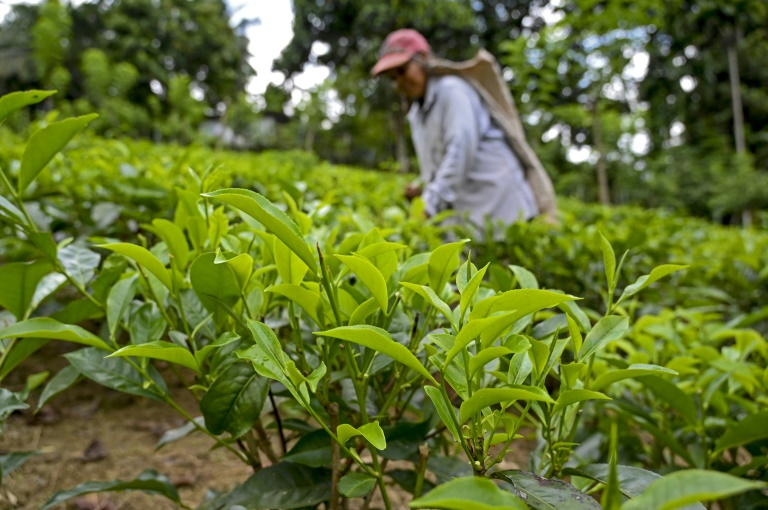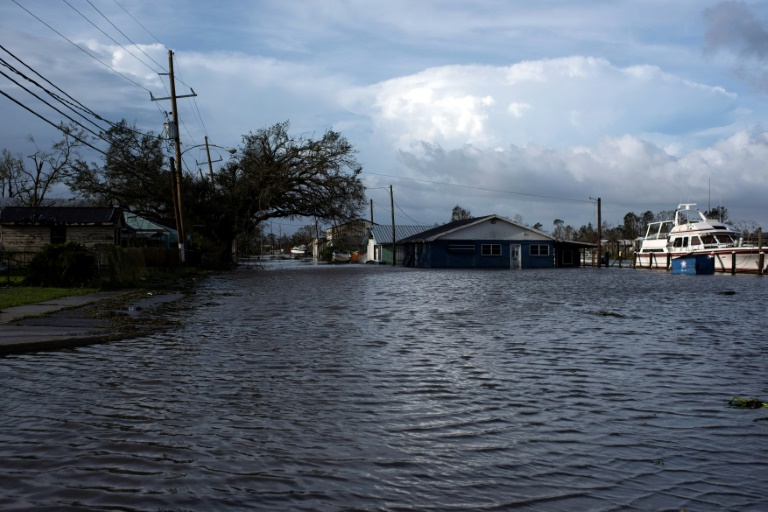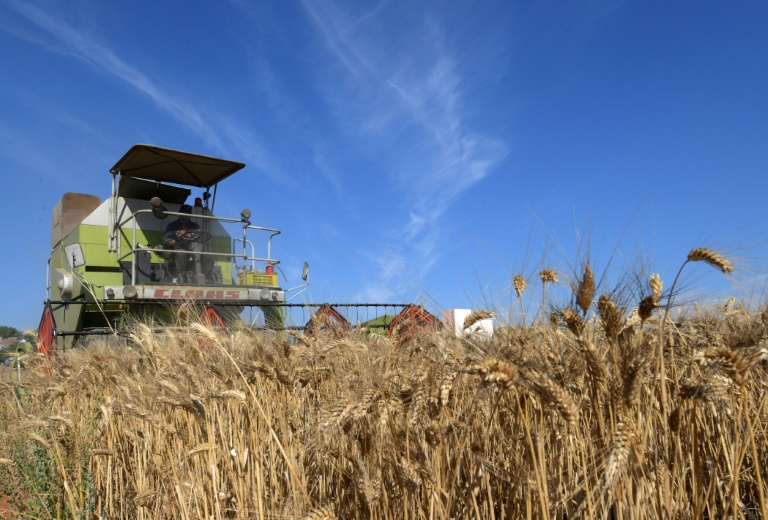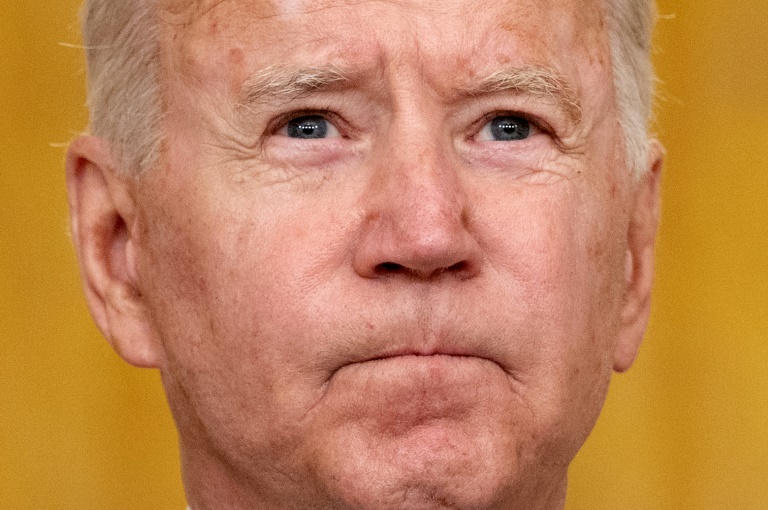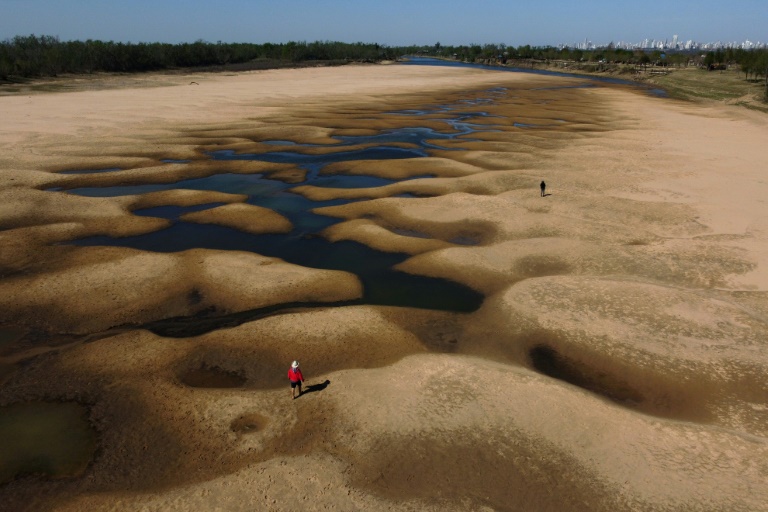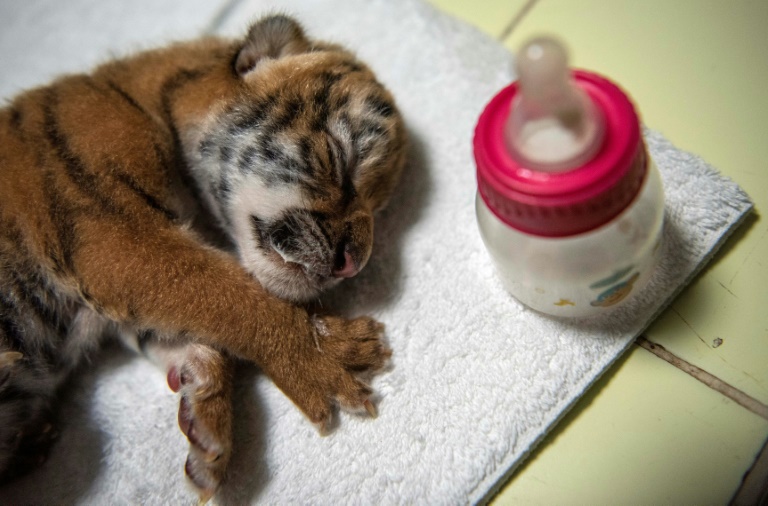Has the wildlife 'Red List' let Africa's big cats down?
Lions and cheetahs are closer to extinction than the authoritative Red List of Threatened Species suggests, according to conservation scientists who warn that sharp drops in populations could be going undetected.
Africa’s marquee big cats are currently listed as “vulnerable”, but with declines in lion numbers close to the threshold for a higher risk category and heated debate over how many cheetahs are actually left in the wild, experts are asking if this is enough.
An “uplisting” does not guarantee protection, they say, but it would more accurately reflect their dire situation and could channel resources to help them survive in the wild, where they are most recently menaced by poaching and the pet trade.
The stone lions guarding Beijing’s Forbidden City, the bronze ones at Admiral Nelson’s feet on Trafalgar Square, the constellation Leo and the emblems of a score of top European football clubs all attest to the cultural significance of these majestic creatures.
But as apex predators, they are also lynchpins in their ecosystems — as South African conservationist Paul Funston puts it, the “big daddy holding a lot of things in place.”
For half a century, the International Union for the Conservation of Nature (IUCN) Red List has classified species along a spectrum from “least concern” and “near threatened” to “vulnerable”, “endangered”, “critically endangered” and “extinct in the wild”.
Broadly, if at least half the population of a species is lost within three generations, it moves to a more threatened category.
Last stop on the slide to oblivion is “extinct”.
Threatened status can trigger national protective measures, restrictions in international trade and funding from states or NGOs.
Lions and cheetahs were both reconfirmed as “vulnerable” in 2014 and are unlikely to change category in a Red List update at the IUCN congress in Marseille, from Friday.
But some experts want the IUCN to go further.
“Cheetahs should be classified as ‘endangered’,” Sarah Durant, an expert on cheetahs and a member of the IUCN’s cat specialist group, told AFP via Zoom.
Following the 2014 assessment, to which she contributed, Durant and another 50 conservation experts made that case in a peer-reviewed study.
One-size-fits-all criteria applied by the IUCN, they argued, do not do justice to all species.
– Catastrophic declines –
Overall, the cheetah’s global numbers were estimated to have dropped about 30 percent to roughly 7,000 over the space of three generations, or 15 years.
To put that in perspective, the ratio of people to cheetahs on Earth is roughly a million-to-one.
While steep, the decline was still well short of the 50-percent threshold for an uplisting to “endangered”.
But that assessment is likely over-optimistic, scientists say, because the data comes overwhelmingly from protected areas, such as national parks and game reserves, even though that is not where most cheetahs are found.
About three-quarters of the big cat’s range — and an estimated two-thirds of its population — is in unprotected zones where the solitary feline must contend with scarce prey, fragmented habitat and deadly encounters with pastoralists defending their livestock.
“We’re measuring population decline in the area where they’re actually doing best,” Durant said.
More long-term, the picture is even bleaker.
The cheetah was once a top predator across most of Africa, the Middle East, central Asia and India, but today it occupies only a sliver — less than 10 percent — of its historic range.
And since 1900, their numbers have dropped by more than 90 percent.
“These are catastrophic declines,” said Durant, a professor in conservation science at the Zoological Society of London.
Lions have not fared better, even if their population in the wild exceeds 20,000, said Funston, senior director of the lion programme at conservation NGO Panthera.
In the 2014 assessment, to which he contributed, their global population was found to have dropped by 43 percent over three generations — 21 years — missing a reclassification threshold by a whisker.
– Hunted –
Unlike cheetahs, lions live in groups, or prides, and almost exclusively within protected areas.
But that doesn’t mean they are always easy to locate.
“Every time we go and look in any real detail, we find that there are fewer lions than we thought, typically three, four, even ten-fold fewer,” Funston told AFP.
In 2017, Funston led an intensive survey of two large national parks in southeastern Angola where conservation authorities had put the population at about 1,000.
“Actual numbers were so low we couldn’t derive a proper scientific estimate,” he said.
“We concluded that there were 10 to 30 lions left.”
The top driver of lion decline is industrial-scale bush-meat poaching, either of the lions themselves or their prey.
Trophy hunting, habitat loss and conflict with humans also menace the animals.
– ‘Influencer’ effect –
Since 2014, new threats have emerged.
“Particularly in southern Africa, we are suddenly seeing an increase in the poaching of lions for body parts” — especially teeth, claws and bones — to supply a booming market in Southeast Asia and China for bogus health and virility elixirs, Funston said.
This illegal traffic has been spurred on by South Africa’s decade-old and controversial commercial captive lion-breeding industry, according to a recent report he co-authored.
From 2011 to 2019, poaching for body parts — evident from the dismembered carcasses left behind — accounted for more than 60 percent of all lion mortality within Limpopo National Park in Mozambique, with a clear increase from 2014 onwards.
For cheetahs, the new threat comes from the Gulf states, where a demand for pets has fuelled a brisk trade in cubs, especially from the horn of Africa, where a sub-species teeters on the brink of extinction.
Social networks are driving a demand for live big cats as well.
“Influencers are flying out of Dubai to get photographed with a cheetah or lion to boost Instagram traffic,” Durant said, highlighting a recent expose by the website Bellingcat.
One key to protection is investment.
In central and western Africa, spending is only about $50-$100 annually per square kilometre, according to Funston.
Little wonder, he said, that both regions have lost more than 90 percent of their large wildlife.
In southern Africa however, where lion populations have gone up, $500 to $800 is invested annually per square kilometre.
Craig Hilton-Taylor, who heads the IUCN’s Red List Unit, defended its classification process as “robust” and said experts looked at a full range of issues.
But he acknowledged that without the efforts of southern African countries, “the lion would have been uplisted from ‘vulnerable’ to ‘endangered’.”
“If the experts do the assessment again, and project forward rather than just looking in the past, they might be able to get it over the threshold,” he told AFP.

